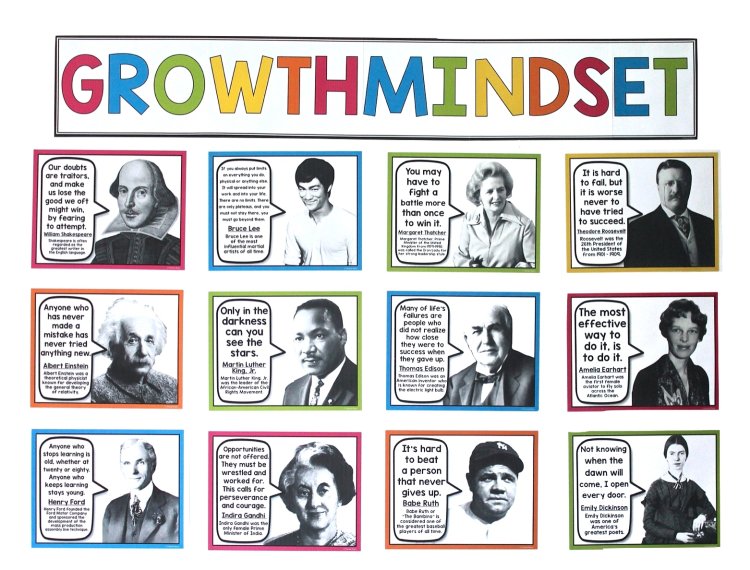10 Ways Teachers Can Instill a Growth Mindset in Students
Understanding and fostering a growth mindset in students has become a priority for teachers across education levels. Learn how to do it.

10 Ways teachers can foster a growth mindset in students
1. Avoid praising intelligence and sheer effort

Dr. Dweck argues that praising someone's intelligence can help cement it as a permanent personality feature.
Explicitly applauding effort, even when it is consistent with a growth attitude, can backfire. When students' efforts bear no fruit, it might be counterproductive to advise them to "just keep trying" and risk making them feel like failures.
2. Use diverse teaching strategies
The lesson's content Video and audio recordings, slideshow presentations, and tactile manipulatives like blocks can all be useful teaching tools. You can teach the entire unit in one sitting with the aid of learning stations.

Procedures – Provide students with opportunities to work in a variety of group sizes and configurations, from pairs to small and large teams.
Products -- Give students room to show off their knowledge in a number of ways on quizzes, projects, and homework. An essay, presentation, or creative piece are all viable options for such an open assignment.
By utilising a wider variety of strategies in the classroom, you may better equip your students to deal with a wide variety of learning challenges.
For instance, many math educators supplement their standard pedagogical arsenal with a selection of math-related games. Remember that it can be difficult to implement alternative pedagogical approaches in a conventional classroom setting. One way to work around the physical limitations of your classroom is to implement a flexible seating arrangement.
3. Introduce simple gamification elements
Gamification, or the use of game mechanics in the classroom, can help teachers focus on their students' successes rather than their failures.
To achieve this goal, you can use online educational games like Prodigy Math and Prodigy English. Students in grades 5 through 8 who used Prodigy Math and were characterised as growth mindset users outperformed their peers and showed greater interest in the math curriculum, according to a poll conducted by Prodigy Education in 2021.
4. Teach the values of challenges
She suggests in particular instructing on the brain's effect when people overcome their inhibitions and learn challenging things. Over time, the strengthened neural connections contribute to a higher IQ. As a result, challenges and hard work are opportunities to learn and grow, not impediments.
5. Encourage students to expand their answers
To help students comprehend knowledge more deeply, ask them to build on their opinions during discussion to disclose what they grasp and what they don't.

One of the basic tenets of the growth mindset is illustrated here: proficiency in a given field isn't innate, but rather acquired via practise.
6. Explain the purposes of abstract skills and concepts
In charge of instructing a course or topic that relies heavily on nebulous ideas and skills? Perhaps more effort is needed to instill a growth mentality among students.
Because if most of your class has trouble seeing how a concept applies to their lives, they may not see the point in studying it further.
7. Allow time for goal-based journaling
Journaling's many benefits include fostering students' growth mindsets through the process of goal setting. Exit tickets can consist of having students:
Make plans for their own education.
Talk about what you've done to get closer to your targets
A student might aim for a specific score on an upcoming quiz. The student must document his or her progress towards this objective in writing. One such measure could be to assign a certain number of extra homework questions per night.
8. Say “yet” more often
Dr. Dweck argues that adding the word "yet" to negative statements makes them more constructive and hence more conducive to personal development.

When used with negative words like "can't" or "don't," this linguistic technique can completely change the meaning of a statement.
Just try putting "yet" at the end of these examples to see for yourself:
I'm terrible at long division.
I'm not qualified to respond to such inquiry.
To be honest, I have no idea how to differentiate between them.
Keep this tip in mind and pass it along to students if you find yourself repeatedly employing the same sentence structure.
You'll show that everyone can learn new things; it simply takes time, dedication, and a willingness to experiment with different methods of study.
9. Help students change their language
By changing the way you phrase things, you can encourage your pupils to adopt a growth mindset by adopting a language that is more positive towards new experiences and challenges.
Fixed-mindset Students interpret failure as a reflection on their own skills, as Dr. Dweck explains in her writing. Instead, you may show them how to see challenges as learning opportunities.
It has been demonstrated that language (in all its forms: written, spoken, and thought) may achieve this purpose.
In 2019, a group of 25 researchers led by Dr. David S. Yeager (and including Dr. Dweck!) conducted a large-scale study on growth mindset and showed that a growth mindset intervention led to higher grades for low-achieving students and also led to more students enrolling in more challenging math courses.
10. Use success folders
It can be difficult for students to keep track of their successes and growth over the course of a semester or year. Success folders solve this issue by offering tangible proof of development.
Success folders are what? Understanding how they foster a growth mentality sheds light on this. In order to:
Make the File Groups -- Distribute sturdy paper or cardboard folders to each student. Have them illustrate or write a story illustrating what they think success looks like to them to use as the cover.
Make Your Own File Folders! Allow students time each day or week to add their own examples of relevant learning to the folder. They may have aced a test or an assignment, or they may have just summarised the work they did.
Think About Your File Folders - Start the week off on a positive note by having students review their accomplishments from the previous week. This prompts introspection, which serves as direct evidence of development.













